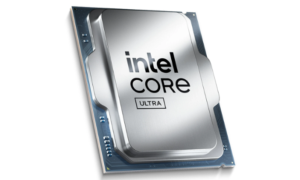It can be quite a confusing affair when looking at the sheer number of processors available.
All these strange numbers and symbols attached to each processor can make it a daunting task but fear not, as below we have broken it down to help you make the right choice.
CPU cores
If you didn’t already know, processors have a certain amount of cores present in each of them. These cores determine how effective the processor will be in handling multiple or complex tasks.
Generally, more cores will equal better performance at multiple tasks. The downside of wanting more cores is the increased cost.
Think about the tasks you would like to accomplish with the processor – if you need it for simple stuff such as browsing the internet, sending emails, and other light activities then save some cash and get a processor with fewer cores.
More intensive applications such as gaming or video editing will require a 4 or more core processors.
Something to look out for is an attribute called hyperthreading.
If you get a processor with this ability it effectively doubles your cores, so a 2-core processor that is hyperthreaded will be seen as a 4-core processor by the computer.
Processor speed
The maximum speed a processor can run at is measured in GHz. This number is a determining factor in how fast the computer will get through a task.
The higher the clock speed, the smoother and snappier your experience will be.
So even if you have 8-cores in a processor, if the clock speed is low, your computer will still feel sluggish and slow.
The rule of thumb is to go for a processor with the highest possible clock speed.
The price will go up with clock speed so keep that in mind when choosing your processor. Some of the best processor information can be found at https://www.etb-tech.com/components/processors.
AMD or Intel?
If you have been hunting for a new processor, there is no doubt that you would have noticed that you can only choose between these two brands of processors.
The major difference that you will see is that AMD makes a slightly cheaper processor that generally has more cores than an Intel processor.
Intel processors will generally have a higher clock speed than AMD.
What this boils down to is that Intel processors are better for smaller defined workloads such as watching videos and general usage whereas AMD processors are better at intensive processes such as video editing and 3D rendering.
This is an example of how higher clock speeds are good at certain tasks and higher core processors have a better function in other areas.
Price
If you are looking for a simple setup to accomplish basic daily tasks look at picking up a Ryzen 3 series or Intel i3 series.
These processors will cost the least and provide good performance for their cheap price.
If you are looking for a mid-level processor capable of multitasking and running a few processes simultaneously, such as spreadsheets, light video editing, and light gaming, then look no further than the Ryzen 5 series or the Intel i5 series of processors.
These processors will cost a bit more and will be in the £200 to £300 range.
Taking it a step up you will get into the high-end of processors.
These are only required if you need the raw horsepower for very intensive tasks. These can be found in the £300 to £400 price bracket.
Final thoughts
The best way to go about making a decision is to find your best fit of price to performance. Always choose a piece of hardware that suits your needs for today but also has a little headroom for the future.
Take a hard look at the task you would like the processor to complete.
Complex tasks will always require more cores and faster functionality will always require faster clock speeds.
There is always going to be a trade-off in performance when choosing clock speed vs cores so go for the right fit for your application and you might not even notice the trade-off!


































